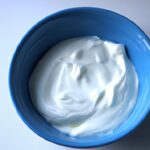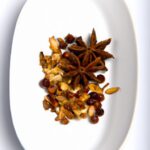There’s something irresistibly bright and tangy about lemon curd-a luscious, velvety spread that captures the very essence of sunshine in a jar. Whether dolloped on warm scones, swirled into yogurt, or layered into decadent desserts, lemon curd offers a zesty sparkle that elevates everyday treats into unforgettable delights. While store-bought versions may tempt with convenience, nothing compares to the magic of crafting this citrus treasure from scratch. In this article, we’ll take you on a flavorful journey through the simple, satisfying process of making homemade lemon curd-a zesty delight that’s as rewarding to create as it is delicious to savor.
Zesty Delight begins with an intimate dance between nature’s freshest lemons and your culinary intuition. Selecting the perfect lemons is the first crucial step in crafting homemade lemon curd that bursts with vibrant zest and a silky texture that sings with balanced sweetness and tang. Imagine the fragrance of sun-kissed citrus oils as you roll each lemon in your palm, seeking those with a thin, glossy skin and heavy weight-signs of juiciness and depth of flavor. This delicate selection ensures your curd will shine with brightness and creaminess that can only come from the freshest fruit.
Prep and Cook Time
- Preparation: 15 minutes
- Cooking: 12 minutes
- Total Time: 27 minutes
Yield
- Approximately 1 ½ cups (about 6 servings)
Difficulty Level
- Medium – beginner-friendly with attention to gentle cooking techniques
Ingredients
- 4 large fresh lemons (for zest and juice, avoid waxed lemons if possible)
- 1 cup granulated sugar
- 4 large eggs, at room temperature
- 6 tablespoons unsalted butter, cut into small cubes
- Pinch of fine sea salt
Instructions
- Prep your lemons: Zest all four lemons first, avoiding the white pith to prevent bitterness. Then, juice them to yield approximately ½ cup of fresh lemon juice.
- Whisk eggs and sugar: In a medium heatproof bowl, whisk together the eggs, sugar, and salt until the mixture becomes smooth and the sugar begins dissolving.
- Cook gently over simmering water: Place the bowl over a simmering water bath (double boiler method). Stir constantly with a silicone spatula to prevent curdling and ensure even cooking.
- Add zest and juice: Slowly whisk in the lemon zest and juice. Continue to cook, stirring frequently, until the mixture thickens and reaches about 170°F (77°C), resembling a smooth custard that coats the back of a spoon. This usually takes 10-12 minutes.
- Incorporate butter: Remove from heat. Gradually whisk in chilled butter cubes one by one, stirring until each piece melts and the curd becomes glossy and velvety.
- Strain for silky smoothness: For an ultra-smooth texture, pour the curd through a fine-mesh sieve into a clean container to separate any bits of cooked egg or zest.
- Cool and store: Cover with plastic wrap pressed directly onto the surface to prevent a skin from forming. Chill for at least 2 hours before serving or storing.
Tips for Success
- Choose unwaxed lemons: Their zest releases more essential oils, amplifying flavor and aroma.
- Room temperature eggs: They blend more uniformly, yielding a silkier curd.
- Cook gently: Keep the heat low to avoid scrambled eggs. Patience is key.
- Use fresh butter: Cubing chilled butter ensures it incorporates evenly without melting too fast.
- Make ahead: Lemon curd improves in flavor overnight and lasts up to 1 week refrigerated or 3 months frozen.
Serving Suggestions
Brighten your mornings by swirling zesty delight lemon curd over warm pancakes or buttery scones, topped with a dollop of whipped cream and a sprig of fresh mint. For an elegant dessert, layer lemon curd with Greek yogurt and granola in parfait glasses. It’s a divine filling for tarts, cakes, or cupcakes, where its tang and creaminess effortlessly elevate every bite.
Store a small bowl on the table for spreading on crusty toast or as a luscious dip for fresh berries-it’s simply irresistible!

Nutritional Information (Per Serving)
| Calories | Protein | Carbs | Fat |
|---|---|---|---|
| 120 kcal | 2 g | 22 g | 3.5 g |
For more creative citrus recipes, explore our Citrus Desserts Collection. To deepen your understanding of lemon varieties and their enticing flavor profiles, visit Specialty Produce – Lemons Guide.
Q&A
Q&A: Zesty Delight – Crafting Homemade Lemon Curd from Scratch
Q1: What exactly is lemon curd?
A: Lemon curd is a luxurious, tangy-sweet spread made from fresh lemons, sugar, eggs, and butter. Its silky, creamy texture and bright citrus flavor make it a perfect companion for everything from scones and toast to cakes and tarts.
Q2: Why should I make lemon curd at home instead of buying it?
A: Homemade lemon curd bursts with fresh, vibrant flavor that store-bought versions often lack. When you craft it yourself, you control the quality of ingredients, avoid preservatives, and can tweak the zing or sweetness to your taste. Plus, there’s something truly satisfying about creating this zesty delight from scratch!
Q3: What are the key ingredients for a perfect lemon curd?
A: The magic quartet includes fresh lemon juice and zest (for that punch of citrus), sugar (to balance the tartness), eggs (to thicken and give richness), and butter (for smoothness and depth). Using fresh, high-quality lemons makes all the difference.
Q4: How do I know when my lemon curd is done cooking?
A: Patience is key! The curd is ready when it has thickened enough to coat the back of a spoon, creating a smooth, glossy coating. It should hold a gentle wave created by your finger, not run off instantly. Overcooking can scramble the eggs, so keep the heat low and stir constantly.
Q5: Can I customize lemon curd with other flavors?
A: Absolutely! While lemon remains the star, adding twists like a hint of ginger, a splash of vanilla extract, or even a touch of lavender can elevate your curd into a unique flavor sensation. Just be mindful not to overpower the citrus zing.
Q6: How do I store homemade lemon curd, and how long does it last?
A: Store your lemon curd in a clean, airtight jar in the refrigerator. It will keep beautifully for up to two weeks. For longer storage, lemon curd freezes well-just thaw it gently in the fridge before enjoying.
Q7: Any tips for serving lemon curd?
A: Lemon curd is incredibly versatile! Slather it on warm scones, swirl it into yogurt, dollop it over pancakes, or use it as a luscious filling for cakes and tart shells. Its bright, zesty notes add sunshine to any dessert.
Q8: What’s the most common mistake to avoid when making lemon curd?
A: The biggest pitfall is cooking at too high a temperature or not stirring enough, which can cause the eggs to scramble and ruin that silky texture. Keep your saucepan over gentle heat and whisk constantly for a smooth, velvety finish.
Crafting your own lemon curd is more than just a recipe-it’s a joyful kitchen adventure that rewards you with a jar of sunshine, rich with flavor and love. Ready to zest up your day?
In Retrospect
As you master the art of crafting your own zesty lemon curd, you’re not just whipping up a simple spread-you’re creating a vibrant burst of sunshine that transforms every bite into a delightful experience. With just a handful of fresh ingredients and a sprinkle of patience, homemade lemon curd becomes a versatile kitchen treasure, perfect for brightening pastries, dolloping onto toast, or swirling into yogurt. So next time life hands you lemons, don’t just make lemonade-embrace the tangy adventure of lemon curd, and savor the sweet satisfaction that comes from scratch-made goodness.


